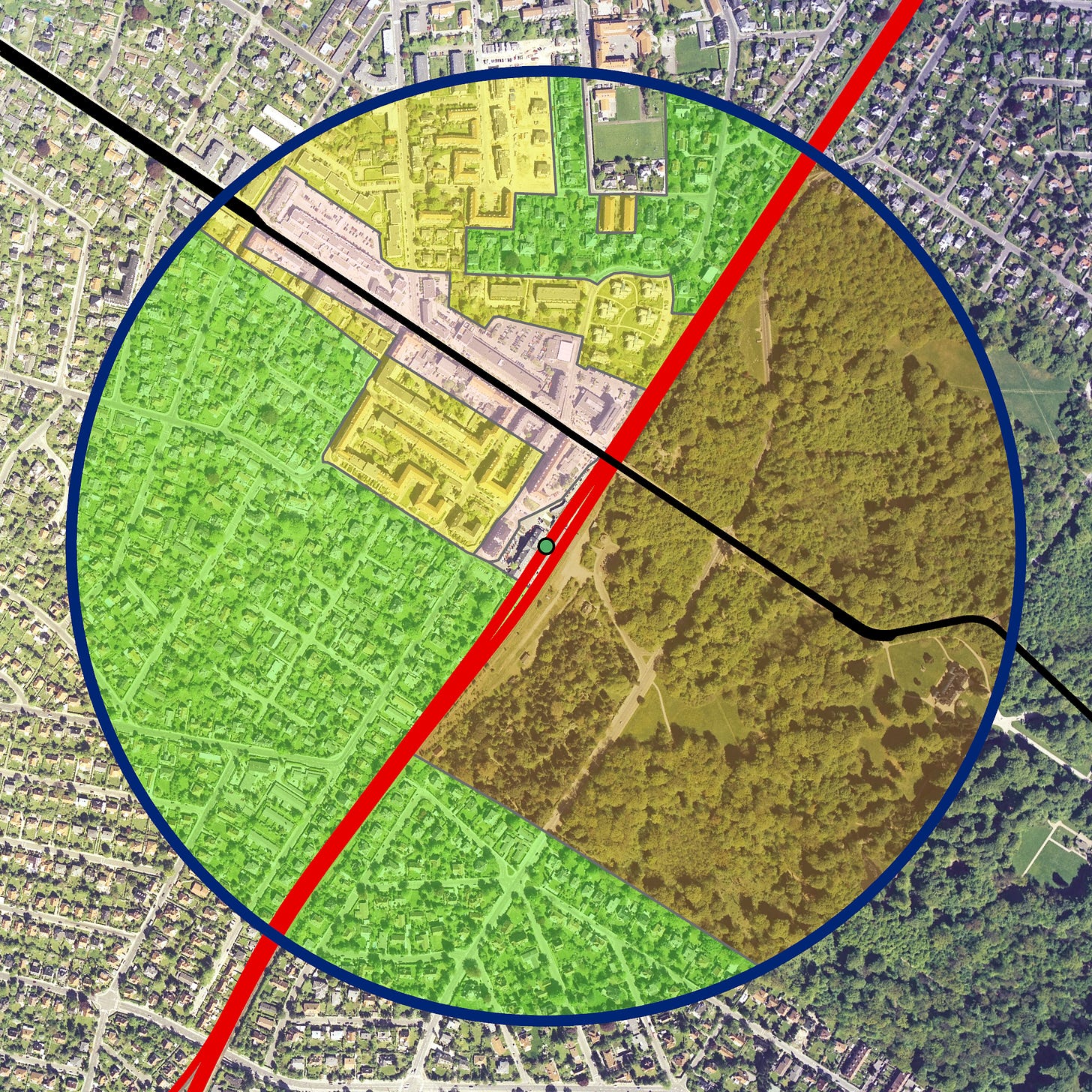When I talk about building more housing in urban areas and inner suburbs of major American cities, people start to jump to conclusions. One of them is that I want everywhere to have high-rise apartments and look like Manhattan. While more urban cores should probably look more like Manhattan, what I advocate for is closer to Charlottenlund in Denmark.
Charlottenlund is one of the northern suburbs of Copenhagen. It is not my neighborhood, but it is where I go when I want to go to a larger-format grocery store than the ones near my home. From above, the area looks like many suburbs in the Eastern United States. There are two large parks (the gardens of two palaces, Denmark is a kingdom) and tree-lined suburban streets.

The neighborhood is anchored by Charlottenlund Station, from which you can take the S-tog (red) into Copenhagen. Jægersborg Allé (black) crosses over the S-tog line near the station and servers as the main road artery for the neighborhood.
Danish zoning practices speak of a 600-meter (about a third of a mile) core area near stations (dark blue) that the densest housing and most offices should be found because it reduces congestion and encourages mass transit use. The area further than 600 meters but less than 1,000 meters (about two-thirds of a mile) allow more intense construction than areas outside, but development is encouraged in the core area.

About half of the core of the neighborhood is the Charlottenlund Palace (brown). Despite this, the core is densely populated. Along Jægersborg Allé is an area with low-rise commercial buildings, four to five-story mixed-use buildings where the bottom floor is commercial and the upper floors are housing, and a hospital (pink). Surrounding that is an area of multi-family housing (yellow). These buildings are no more than five stories. Around that is an area of mixed single-family and multi-family housing (green).

This kind of land use is my dream. If you compare the core in Charlottenlund to the core in Friendship Heights along the DC-Maryland line, where I used to live, you see a very different pattern of land use. You have an area of high-rise buildings along Wisconsin Avenue. Except for the area in the upper left-hand corner of the map, all of these are entirely commercial. As you move away from Wisconsin Avenue you quickly drop from high-rises to single-family only housing. There are no mid-rise buildings and no low-rise multi-family housing mixed in with the single-family homes. The differences are stark.
If we could make Friendship Heights more like Charlottenlund it would be able to house more people while also having fewer high-rise buildings. The secret to European cities is mid-rise buildings with small shops on the first floor. For example, Paris is denser than New York City but much of the housing is in Haussmann-style buildings which were restricted to 6 stories. Building more housing in American cities can mean high-rise condos, but it can also mean mid-rise buildings, like those that are found here and in Paris, and can also mean mixing townhouses and duplexes in with single-family homes. The latter two are the more important solutions to creating more affordable housing in our cities.




